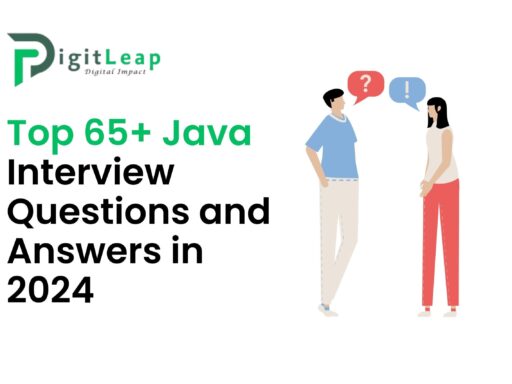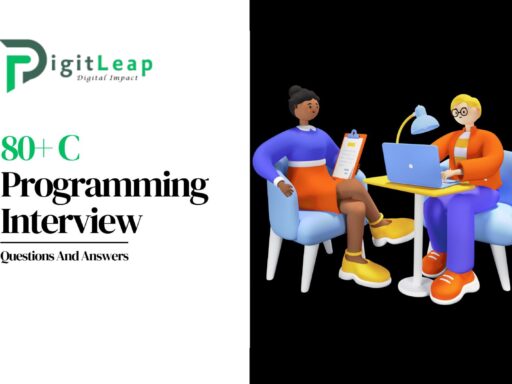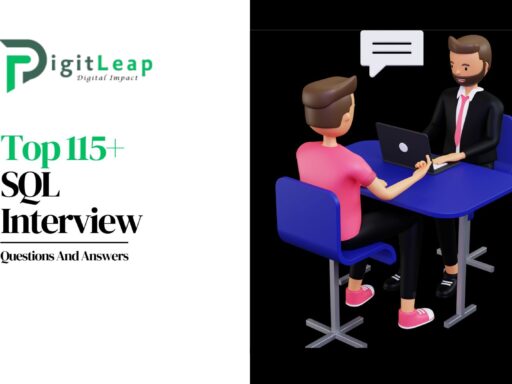30+ LinkedIn Ads Interview Questions and Answers for 2025
As LinkedIn continues to evolve as a powerful platform for professional networking and B2B marketing, expertise in LinkedIn Ads has become a highly sought-after skill. Whether you’re interviewing for a digital marketing role or seeking to sharpen your knowledge for career advancement, here’s a comprehensive list of 30+ interview questions along with sample answers that reflect current trends and expectations for 2025.

1. What are LinkedIn Ads and how do they differ from other social media ad platforms?
Answer:
LinkedIn Ads are a suite of paid advertising options on LinkedIn, designed primarily for B2B marketing. Unlike platforms like Facebook or Instagram, LinkedIn offers advanced targeting based on professional attributes such as job title, industry, and company size, which makes it ideal for reaching decision-makers and industry professionals.
2. Can you explain the different ad formats available on LinkedIn?
Answer:
LinkedIn provides several ad formats, including Sponsored Content (native posts in the feed), Sponsored InMail (personalized messages delivered directly to users’ inboxes), Text Ads (displayed in sidebars), Dynamic Ads (personalized ads that adjust content based on user data), and Video Ads. Each format serves different campaign goals, from brand awareness to direct lead generation.
3. How do you set up a LinkedIn Ads campaign?
Answer:
Setting up a LinkedIn Ads campaign involves choosing the right objective (such as website visits, lead generation, or engagement), defining your target audience using LinkedIn’s detailed demographic filters, selecting the appropriate ad format, setting a budget, and launching the campaign through the LinkedIn Campaign Manager. It’s important to monitor and adjust based on performance data.
4. What targeting options does LinkedIn offer that make it unique?
Answer:
LinkedIn offers targeting based on professional criteria, including job title, company name, industry, seniority level, skills, and groups. This allows advertisers to hone in on decision-makers and specific professional segments, which is a significant advantage over other platforms that mainly offer demographic targeting.
5. How do you measure the success of a LinkedIn Ads campaign?
Answer:
Success is measured using metrics such as Click-Through Rate (CTR), Conversion Rate, Cost Per Click (CPC), and Return on Ad Spend (ROAS). Additionally, LinkedIn’s Campaign Manager provides insights into engagement, lead quality, and website traffic driven by ads, allowing for comprehensive performance analysis.
6. What strategies can you use to optimize LinkedIn Ads for better performance?
Answer:
Optimization strategies include refining your audience targeting, testing multiple ad creatives (A/B testing), adjusting bids based on performance, using negative targeting to filter out irrelevant audiences, and continuously monitoring key metrics to make data-driven adjustments.
7. How important is content quality in a LinkedIn Ads campaign?
Answer:
Content quality is crucial in LinkedIn Ads. High-quality, engaging content tailored to your target audience can significantly improve engagement and conversion rates. Ads should be clear, concise, and offer value, whether it’s through informative content, exclusive offers, or compelling calls-to-action.
8. Describe a time when you successfully improved a LinkedIn Ads campaign.
Answer:
(Example Answer) “In my previous role, I managed a LinkedIn campaign that initially had a low CTR. By analyzing audience insights, I identified that our messaging was too generic. I then reworked the ad copy to address specific pain points of our target audience and tested two new creatives. This resulted in a 35% increase in CTR and a 20% reduction in CPC over three months.”
9. What role does bidding strategy play in LinkedIn Ads, and how do you choose one?
Answer:
Bidding strategy is essential for controlling costs and maximizing ROI. LinkedIn offers automated and manual bidding options. I typically choose based on campaign objectives: automated bidding for campaigns focused on reach and conversions, and manual bidding when I have a clear idea of my target cost-per-action (CPA) and want greater control over bids.
10. How do you use LinkedIn’s Lead Gen Forms in your campaigns?
Answer:
LinkedIn Lead Gen Forms simplify the lead capture process by pre-filling user data from their LinkedIn profiles. I integrate these forms into Sponsored Content campaigns to reduce friction and boost conversion rates. Analyzing form submission data helps refine targeting and messaging for future campaigns.
11. What are some common challenges you’ve encountered with LinkedIn Ads, and how did you overcome them?
Answer:
Common challenges include high CPC, ad fatigue, and limited audience size. To overcome these, I regularly refresh ad creatives, test different targeting parameters, and leverage A/B testing to identify what resonates best with the audience. Additionally, I use negative keywords and audience segmentation to minimize wasted spend.
12. Explain the importance of using analytics tools in managing LinkedIn Ads.
Answer:
Analytics tools are vital for measuring campaign performance and identifying optimization opportunities. They help track key metrics, provide insights into audience behavior, and allow for real-time adjustments. Tools like LinkedIn Campaign Manager, Google Analytics, and third-party platforms enable a data-driven approach to refining campaigns and maximizing ROI.
13. How do you handle budget allocation across multiple campaigns on LinkedIn?
Answer:
I begin by setting clear campaign objectives and then allocate budgets based on historical performance and potential ROI. I continuously monitor performance and reallocate funds to high-performing campaigns. Regular reviews and adjustments ensure that the overall budget is optimized for the best possible results.
14. What are dynamic ads on LinkedIn and when would you use them?
Answer:
Dynamic Ads are personalized ads that automatically adapt content based on the viewer’s profile information, such as their name, profile picture, or company logo. They are ideal for increasing engagement by making the ad feel personalized. I use them for brand awareness and lead generation campaigns where personalization can drive higher user engagement.
15. Can you explain the concept of “attribution” in the context of LinkedIn Ads?
Answer:
Attribution in LinkedIn Ads refers to identifying which ads or touchpoints contributed to a conversion. It helps in understanding the customer journey and evaluating the effectiveness of various campaigns. By setting up proper tracking and utilizing LinkedIn’s attribution models, I can determine the impact of each campaign and optimize accordingly.
16. What role do landing pages play in your LinkedIn Ads strategy?
Answer:
Landing pages are critical to the success of a PPC campaign. They must be optimized for conversion and consistent with the ad’s messaging. A well-designed landing page improves user experience and ensures that the traffic generated by your ads converts into leads or sales. I focus on clear calls-to-action, fast load times, and mobile responsiveness.
17. How do you optimize ad frequency in your LinkedIn campaigns?
Answer:
Ad frequency needs to be balanced to avoid ad fatigue while ensuring sufficient exposure. I monitor the frequency metric in Campaign Manager and adjust targeting, creative rotation, and bid strategies to maintain optimal exposure without overwhelming the audience.
18. What are some innovative strategies you’ve used in LinkedIn Ads that delivered exceptional results?
Answer:
I’ve experimented with a mix of video ads and interactive content to boost engagement, coupled with precise targeting based on industry-specific data. Integrating LinkedIn Lead Gen Forms with retargeting strategies also significantly improved conversion rates. These innovative approaches not only increased engagement but also drove higher-quality leads.
19. How do you manage cross-device tracking for LinkedIn Ads?
Answer:
Cross-device tracking is managed through the integration of LinkedIn’s tracking tools with Google Analytics. This allows me to monitor how users interact with ads across different devices and adjust campaigns accordingly. Ensuring that landing pages are mobile-friendly also plays a crucial role in maintaining a seamless user experience.
20. What is the significance of using negative keywords in LinkedIn Ads?
Answer:
Negative keywords help filter out irrelevant traffic and prevent wasted spend. By excluding certain terms, you ensure that your ads are shown only to a highly relevant audience, which improves CTR and conversion rates. I regularly update my negative keyword list based on performance insights and search term reports.
21. How do you conduct competitor analysis for LinkedIn Ads?
Answer:
I use tools like SpyFu, SEMrush, and LinkedIn’s own insights to analyze competitor campaigns. This includes reviewing their ad copies, targeting strategies, and performance metrics. By understanding what works for competitors, I can identify gaps in my strategy and adjust my campaigns to gain a competitive edge.
22. What strategies do you use for seasonal campaigns on LinkedIn?
Answer:
For seasonal campaigns, I plan well in advance, aligning ad creative and messaging with the season’s themes. I adjust bids and budgets to capitalize on seasonal demand and incorporate timely offers. Monitoring historical performance data from previous seasons also helps in predicting trends and optimizing the campaign accordingly.
23. How important is it to test different ad formats on LinkedIn?
Answer:
Testing different ad formats is crucial because it helps identify what resonates best with your target audience. Whether it’s Sponsored Content, Text Ads, or Dynamic Ads, experimenting with various formats can reveal insights about user behavior and engagement, allowing for informed decisions on where to invest your budget for maximum impact.
24. What role does mobile optimization play in LinkedIn Ads?
Answer:
With a significant portion of LinkedIn users accessing the platform via mobile devices, ensuring that ads and landing pages are optimized for mobile is essential. Mobile optimization leads to better user experience, higher engagement rates, and improved conversion rates, which are critical for the overall success of a campaign.
25. How do you integrate LinkedIn Ads with other marketing channels?
Answer:
Integrating LinkedIn Ads with other channels like email marketing, social media, and content marketing creates a cohesive digital strategy. I ensure that messaging is consistent across channels and use cross-channel data to inform targeting and creative strategies. This integration helps reinforce brand messaging and drives better overall campaign performance.
26. How do you approach budget allocation for different regions on LinkedIn?
Answer:
Regional budget allocation depends on market size, audience behavior, and historical performance data. I analyze data from each region and adjust bids and budgets accordingly, ensuring that high-performing regions receive sufficient investment while still exploring growth opportunities in emerging markets.
27. What are your best practices for ad scheduling on LinkedIn?
Answer:
Ad scheduling involves analyzing when your target audience is most active and likely to engage with your ads. I use data insights to schedule ads during peak hours and days of the week, ensuring optimal performance. Adjustments are made based on campaign performance and audience behavior trends.
28. How do you handle multi-language campaigns on LinkedIn?
Answer:
For multi-language campaigns, I create separate ad groups tailored to each language and region. This allows for more precise targeting and messaging that resonates with local audiences. I also ensure that translation quality is high and that cultural nuances are considered to maintain relevance.
29. What is the role of retargeting in LinkedIn Ads?
Answer:
Retargeting is vital for re-engaging users who have previously interacted with your brand. By setting up retargeting campaigns, you can bring back potential customers who did not convert on their first visit, thereby increasing overall conversion rates and improving ROI.
30. How do you measure the long-term impact of your LinkedIn Ads campaigns?
Answer:
Long-term impact is measured by tracking metrics such as customer lifetime value (CLV), conversion rates over time, and overall brand awareness. Using a combination of LinkedIn’s analytics, Google Analytics, and CRM data, I evaluate how campaigns contribute to sustained business growth and customer retention.
31. What advice would you give to someone just starting with LinkedIn Ads?
Answer:
Start by clearly defining your objectives and understanding your target audience. Invest time in learning the platform’s tools and best practices, and begin with small, test campaigns. Use the data you gather to refine your strategy, and don’t be afraid to experiment with different ad formats and targeting options. Continuous learning and iteration are key to long-term success.
Conclusion
Mastering LinkedIn Ads requires a blend of strategic planning, creative experimentation, and data-driven optimization. By preparing for these common interview questions and understanding the underlying principles of effective PPC management on LinkedIn, you’ll be well-equipped to demonstrate your expertise and drive successful campaigns. Use these insights to refine your approach and continue evolving your skills in this dynamic digital landscape.






